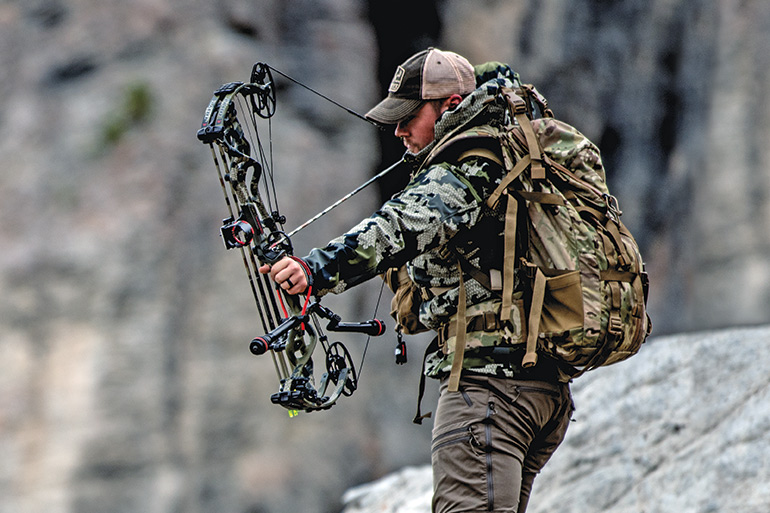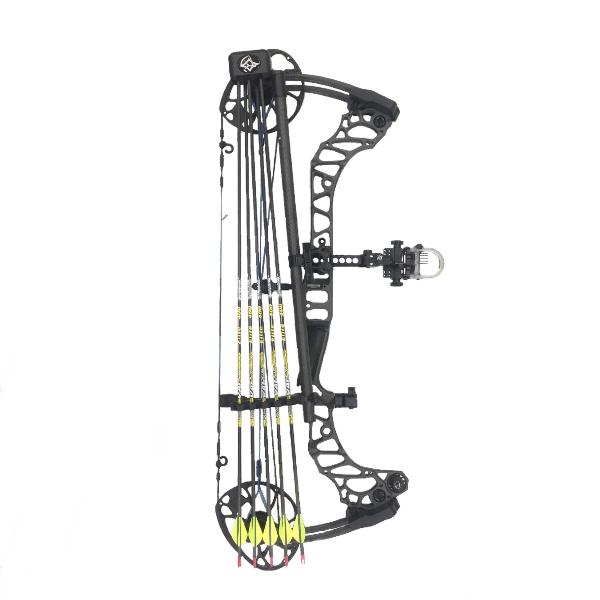The Ultimate Overview to Selecting the Right Archery Stabilizer for Enhanced Precision
Archery is a sporting activity that requires precision and precision, and selecting the best equipment is important for achieving optimum outcomes. Among the numerous devices offered, an archery stabilizer plays a significant duty in improving accuracy. With so many alternatives on the market, it can be overwhelming to establish which stabilizer is the best fit for your demands. In this detailed guide, we will certainly explore the crucial elements to take into consideration when choosing an archery stabilizer for boosted accuracy. From discovering the optimal length to recognizing the different designs and products, we will look into whatever you require to know to make a notified choice. So, whether you are an experienced archer aiming to upgrade your devices or a newbie seeking support, join us on this trip as we decipher the keys to choosing the ideal archery stabilizer.
Size: Discovering the Ideal Stabilizer Size
When choosing an archery stabilizer for optimal performance,Determining the perfect stabilizer length is essential. The length of a stabilizer straight influences the equilibrium, security, and precision of the bow. A stabilizer that is as well long can make the bow feel top-heavy and tough to manage, while a stabilizer that is as well brief might not give enough stability and dampening of resonances. Discovering the appropriate size requires considering aspects such as the archer's shooting design, bow weight, and personal preference.
A longer stabilizer, generally ranging from 8 to 12 inches, can give higher stability and decrease bow torque. This is particularly useful for archers who shoot with a high draw weight or those that have a tendency to torque the bow throughout the shot. The added size helps to disperse the weight evenly and counterbalance any torque or activity.
On the various other hand, a shorter stabilizer, generally between 4 to 7 inches, supplies much more ability to move and quicker reaction. It is preferred by archers that shoot with a reduced draw weight or those that require even more movement, such as seekers or 3D shooters. The shorter length enables simpler movement through tight rooms and faster adjustments.
Eventually, the optimal stabilizer size refers personal preference and shooting style. It is advised to experiment with various sizes and observe the effects on stability and accuracy. Consulting with seasoned archers or professionals can also supply valuable insights and recommendations.
Weight: Figuring Out the Appropriate Stabilizer Weight
After considering the ideal stabilizer size, the following important element to think about when picking an archery stabilizer is determining the suitable stabilizer weight - archery stabilizer. The weight of the stabilizer plays a crucial role in improving precision and security during the shot
The weight of the stabilizer impacts the balance and control of the bow. A heavier stabilizer can supply boosted stability and control, particularly for shooters with a tendency for shaky hands or inconsistent shots. It helps to absorb the vibrations and recoil produced by the bow, minimizing torque and decreasing the effect on the arrow's flight.
On the various other hand, a lighter stabilizer allows for a quicker and more responsive bow. It can be useful for shooters that prioritize ability to move and rate over stability. Lighter stabilizers additionally reduce tiredness throughout long shooting sessions or competitors.
To determine the appropriate stabilizer weight for your needs, it is very important to consider your shooting design, physical stamina, and bow setup. Trying out various weights and observing the influence on your shooting efficiency is essential to locating the best balance.
Inevitably, the ideal stabilizer weight will certainly differ for every individual archer. It is recommended to begin with a moderate weight and make adjustments based upon personal preference and shooting results. Keep in mind, the objective is to attain a steady and regulated shot, while additionally preserving comfort and ease of usage.
Materials: Picking the Right Materials for Longevity and Efficiency
When selecting an archery stabilizer, it is critical to meticulously take into consideration the products utilized in its building and construction to guarantee longevity and optimize efficiency. The selection of materials can significantly influence the overall high quality and effectiveness of the stabilizer.
One of the most frequently utilized products for stabilizers is carbon fiber. Additionally, carbon fiber stabilizers are immune to temperature level adjustments and are much less most likely to warp or bend over time.
An additional preferred product for stabilizers is light weight aluminum. Light weight aluminum stabilizers are recognized for their sturdiness and rigidness. They give superb wetting capabilities, reducing the quantity of shock and resonance transferred to article source the shooter's hand. Aluminum stabilizers likewise offer a wide variety of personalization alternatives, enabling archers to readjust the weight and size to suit their preferences.
Some stabilizers are built making use of a mix of products. A stabilizer might have a carbon fiber core covered in an aluminum covering. This hybrid style incorporates the very best qualities of both materials, offering optimal security, durability, and efficiency.
Design: Recognizing the Different Stabilizer Layouts and Their Effects
Considering the materials made use of in archery stabilizers, it is essential to currently delve into the different designs of stabilizers and their particular effects. The style of an archery stabilizer plays a vital role in enhancing accuracy and lowering vibration throughout the shot. There are numerous different styles readily available in the market, each with its own one-of-a-kind characteristics.

An additional popular layout is the side bar stabilizer. This design involves affixing a short pole to the side of the bow, alongside the main lengthy pole. Side bar stabilizers assist in counteracting the weight of accessories, such as quivers or sights, and give additional stability to the bow.
Some stabilizers feature adjustable weights. These stabilizers enable archers to fine-tune the balance and feeling of their bows by including or eliminating weights. This feature is specifically valuable for archers that favor a particular weight distribution or wish to explore various configurations.
Furthermore, some stabilizers incorporate dampening modern technology to decrease vibration and noise. These stabilizers often have built-in dampeners or use materials that absorb vibrations, resulting in a smoother and quieter shot.

Accessories: Exploring Added Accessories for Boosted Stability
These accessories are designed to function in conjunction with the archery stabilizer to give an also higher degree of security and accuracy. helpful resources One such accessory is the V-bar or the side stabilizer place.
Another device that can enhance security is a bow sling. A bow sling is a band that connects to the bow and enables the archer to keep an unwinded hold on the bow take care of without the fear of dropping it (archery stabilizer). This loosened up grasp helps to reduce muscle tension and enables for a much more steady and consistent shot
Additionally, a stabilizer weight system can be utilized to adjust the equilibrium and security of the bow. These weight systems generally consist of little weights that can be added or removed from the stabilizer to adjust the balance point of the bow. By finding the optimum equilibrium factor, archers can attain an extra precise and stable shot.
Conclusion
In verdict, choosing the right archery stabilizer entails taking into consideration elements such as length, weight, products, style, and additional devices. The optimal stabilizer size and weight will depend on individual choices and shooting style.
Figuring out the optimal stabilizer length is crucial when picking an archery stabilizer for ideal performance. A stabilizer that is too long can make the bow really feel top-heavy and hard to control, while a stabilizer that is as well brief may not provide sufficient stability and dampening of resonances - my company archery stabilizer.Taking right into account the materials utilized in archery stabilizers, it is important to currently dive right into the various designs of stabilizers and their corresponding results. Side bar stabilizers assist in counterbalancing the weight of accessories, such as quivers or views, and offer extra security to the bow
These weight systems usually are composed of tiny weights that can be added or removed from the stabilizer to change the equilibrium factor of the bow.